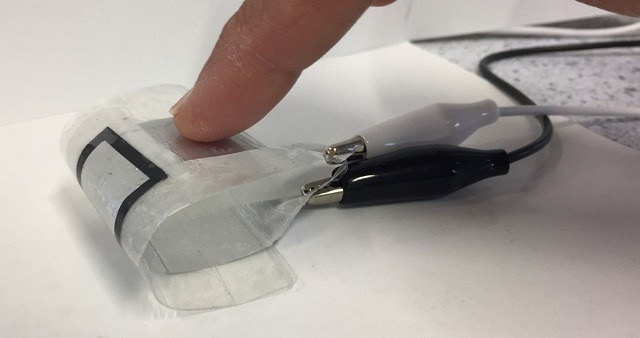
Experts at Queen’s University Belfast, Belfast, UK, have designed a flexible battery that could provide an alternative to the rigid batteries that usually power medical implants.
Currently, devices such as pacemakers, defibrillators and neurostimulators are fitted with rigid and metal based batteries. These can cause patient discomfort, and are not easily disposable.
Geetha Srinivasan and a team of young researchers from Queen’s University Ionic Liquid Laboratories (QUILL) Research Centre, have now developed a flexible supercapacitor with a longer cycle life, which could power body sensors.
Made up of non-flammable electrolytes and organic composites, the flexible battery is safe to the human body. It can also be easily decomposed without incurring the major costs associated with recycling or disposing off metal-based batteries.
Lower manufacturing costs
The findings show that the device could be manufactured using readily available natural feedstock, rather than sophisticated and expensive metals or semiconductors. Published in Energy Technology and Green Chemistry, the research may be applicable to sectors beyond healthcare.
Srinivasan explains, “In modern society, we all increasingly depend on portable electronics such as smartphones and laptops in our everyday lives and this trend has spread to other important areas such as healthcare devices. The organic storage device could also provide solutions in wearable electronics and portable electronic devices, making these more flexible.
“In medical devices such as pacemakers and defibrillators there are two implants, one which is fitted in the heart and another which holds the metal based, rigid batteries—this is implanted under the skin.
“The implant under the skin is wired to the device and can cause patients discomfort as it is rubs against the skin. For this reason batteries need to be compatible to the human body and, ideally, we would like them to be flexible so that they can adapt to body shapes.”
Srinivasan adds, “At Queen’s University Belfast we have designed a flexible energy storage device, which consists of conducting polymer—biopolymer composites as durable electrodes and ionic liquids as safer electrolytes.
Longer life-cycle
“The device we have created has a longer life-cycle, is non-flammable, has no leakage issues and above all, it is more flexible for placing within the body.”
Marta Lorenzo researcher on the project at Queen’s University Belfast, comments, “Although this research could be a potential solution to a global problem, the actual supercapacitor assembly is a straightforward process.”
Srinivasan says, “There is also opportunity to fabricate task-specific supercapacitors. This means that their properties can be tuned and also manufactured using environmentally-friendly methods, which is important if they are to be produced on a large scale, for example in powering portable personal electronic devices.”









